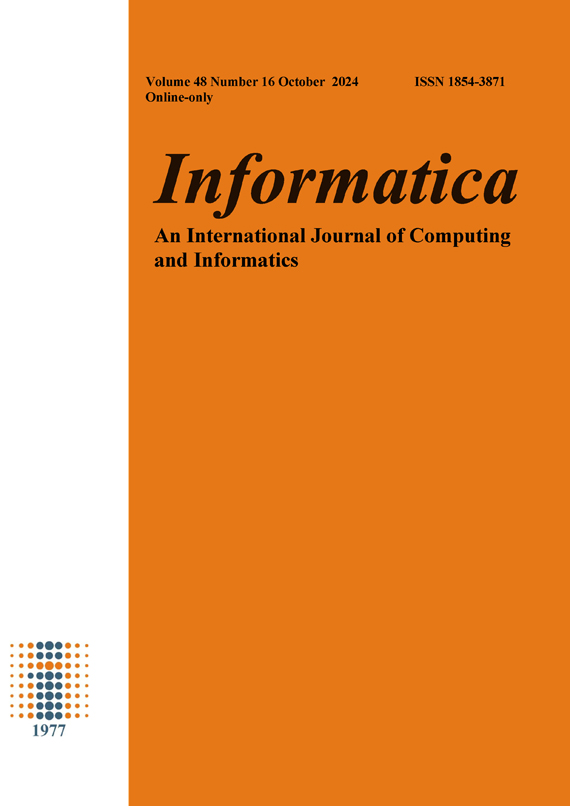Construction and Monitoring of a Quantitative Inversion Model for Conductivity Using Unmanned Aerial Vehicle Remote Sensing Based on ELM Algorithm
DOI:
https://doi.org/10.31449/inf.v48i16.6389Abstract
Currently, unmanned aerial vehicle remote sensing technique has wide application in agricultural soil salinization monitoring. However, there are still issues such as high costs and complex data preprocessing. Based on this, this study uses unmanned aerial vehicle multispectral images and ground synchronous collection of soil conductivity as the data source. The spectral and texture features of unmanned aerial vehicle multispectral images were extracted using the gray-level co-occurrence matrix and Gabor two-dimensional filters. A quantitative inversion model for soil conductivity using unmanned aerial vehicle remote sensing was established by combining extreme learning algorithms. A quantitative inversion model for soil conductivity based on extreme learning machine algorithm was constructed by integrating spectral and texture feature information. The determination coefficients of its modeling set were 0.77, I0.82, and 0.86, respectively, and the prediction set was 0.73, 0.77, and 0.80, respectively, with the highest prediction accuracy. Therefore, by integrating texture feature spectrum index information and combining extreme learning machine algorithm, an unmanned aerial vehicle remote sensing monitoring model for soil conductivity is constructed, which can achieve high-precision monitoring of soil salinization. This study has certain technical guidance value for unmanned aerial vehicle remote sensing monitoring of soil salinization.Downloads
Published
Issue
Section
License
I assign to Informatica, An International Journal of Computing and Informatics ("Journal") the copyright in the manuscript identified above and any additional material (figures, tables, illustrations, software or other information intended for publication) submitted as part of or as a supplement to the manuscript ("Paper") in all forms and media throughout the world, in all languages, for the full term of copyright, effective when and if the article is accepted for publication. This transfer includes the right to reproduce and/or to distribute the Paper to other journals or digital libraries in electronic and online forms and systems.
I understand that I retain the rights to use the pre-prints, off-prints, accepted manuscript and published journal Paper for personal use, scholarly purposes and internal institutional use.
In certain cases, I can ask for retaining the publishing rights of the Paper. The Journal can permit or deny the request for publishing rights, to which I fully agree.
I declare that the submitted Paper is original, has been written by the stated authors and has not been published elsewhere nor is currently being considered for publication by any other journal and will not be submitted for such review while under review by this Journal. The Paper contains no material that violates proprietary rights of any other person or entity. I have obtained written permission from copyright owners for any excerpts from copyrighted works that are included and have credited the sources in my article. I have informed the co-author(s) of the terms of this publishing agreement.
Copyright © Slovenian Society Informatika








